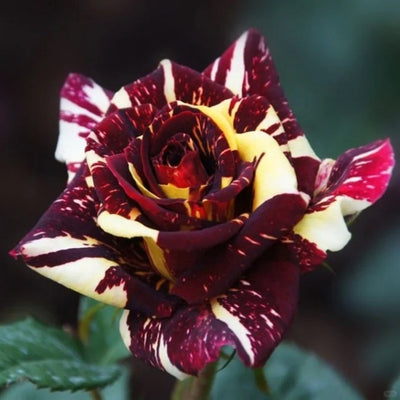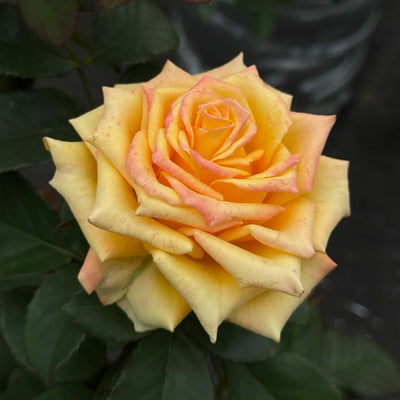🔥 Recommended Product
Understanding Rose Thorns: How to Stay Safe While Enjoying Your Garden
As a passionate rose enthusiast and gardening expert, I often get questions about rose thorns—specifically, whether they are toxic and how to handle them safely. While rose thorns themselves do not produce toxins, they can cause discomfort if they prick your skin. Knowing how to handle roses and care for any injuries is essential for a safe and enjoyable gardening experience.

Are Rose Thorns Toxic?
Let’s clear up the biggest myth first: rose thorns are not poisonous. However, they can still cause issues. When a thorn punctures your skin, it can lead to pain, itching, redness, and swelling. These symptoms result from your body reacting to the physical trauma of the prick, not because the thorn is releasing any toxins.
But here’s the catch: if bacteria or fungi enter the wound, it could cause an infection. In severe cases, untreated infections can lead to complications like pus-filled wounds or even systemic infections.This means that while rose thorns themselves are harmless, what happens after the injury depends on how you handle it.
Protecting Yourself While Working with Roses
Roses may be beautiful, but those thorns demand respect. Here’s how I protect myself when pruning or handling roses:
1. Invest in Proper Gloves
Don’t skimp on quality when it comes to gardening gloves. Opt for thick, thorn-resistant gloves that extend past your wrists. Look for materials like leather or synthetic blends specifically designed for thorny plants.
2. Wear Protective Clothing
Long-sleeved shirts and sturdy pants are your best friends when dealing with roses. These can shield your arms and legs from accidental scratches. Choose fabrics that are durable but breathable to stay comfortable while you work.
3. Use the Right Tools
Forget those dull, flimsy scissors. Always use sharp, high-quality pruning shears designed for cutting rose stems. Sharp tools reduce the risk of needing excessive force, which can lead to slips and accidental pricks. Bonus tip: clean your tools regularly to prevent the transfer of pathogens to your plants—or your skin.
4. Be Mindful of Your Movements
Work slowly and methodically when pruning roses. Pay attention to where your hands are relative to the branches to avoid accidental contact with thorns.
What to Do If You Get Pricked by a Rose Thorn
Despite your best efforts, accidents can happen. Knowing how to treat a thorn injury immediately can make all the difference in preventing complications.
Step 1: Clean the Wound
• Wash the affected area thoroughly with soap and warm water.
• Gently scrub to remove any debris or dirt.
Step 2: Disinfect the Area
• Apply an antiseptic solution or rubbing alcohol to kill any potential bacteria.
Step 3: Protect the Wound
• Cover the wound with a sterile bandage to keep it clean.
• Change the dressing daily and keep an eye on the area for signs of infection.
When to See a Doctor
• If the wound becomes increasingly red, swollen, or painful.
• If you notice pus, fever, or any other signs of systemic infection.
• If you haven’t had a tetanus shot in the last five years, you may need a booster.
Bonus Tips for Handling Roses Safely
1. Hydrate Your Roses Before Pruning
Well-watered roses tend to have more flexible stems, making them easier to manage.
2. Prune During the Right Time of Day
Early morning or late afternoon is ideal for pruning to avoid heat stress—for both you and the roses!
3. Dispose of Cuttings Safely
Place thorny stems and cuttings directly into a yard waste bag or compost bin. Avoid tossing them loosely, as they can still prick you later.
The Joy of Gardening Safely
Roses are the epitome of beauty in a garden, but those thorns remind us to respect nature’s boundaries. By taking a few precautions, you can enjoy the process of pruning and caring for your roses without unnecessary discomfort or injury.Remember, gardening isn’t just about the results—it’s about the journey. Staying safe ensures that your journey remains a joyful one.
If you’ve ever had a close encounter with rose thorns or have your own safety tips, I’d love to hear about them in the comments below. Let’s keep our gardens—and ourselves—healthy and thriving!
website:https://roseexplosion.com/


















































Got pricked by a rose thorn today . I didn’t wash or sterilize it. It’s a small pink purple at the moment.
No point in cleaning it many hours later I suppose.
What fo you think?
Many thanks…Colm⁰